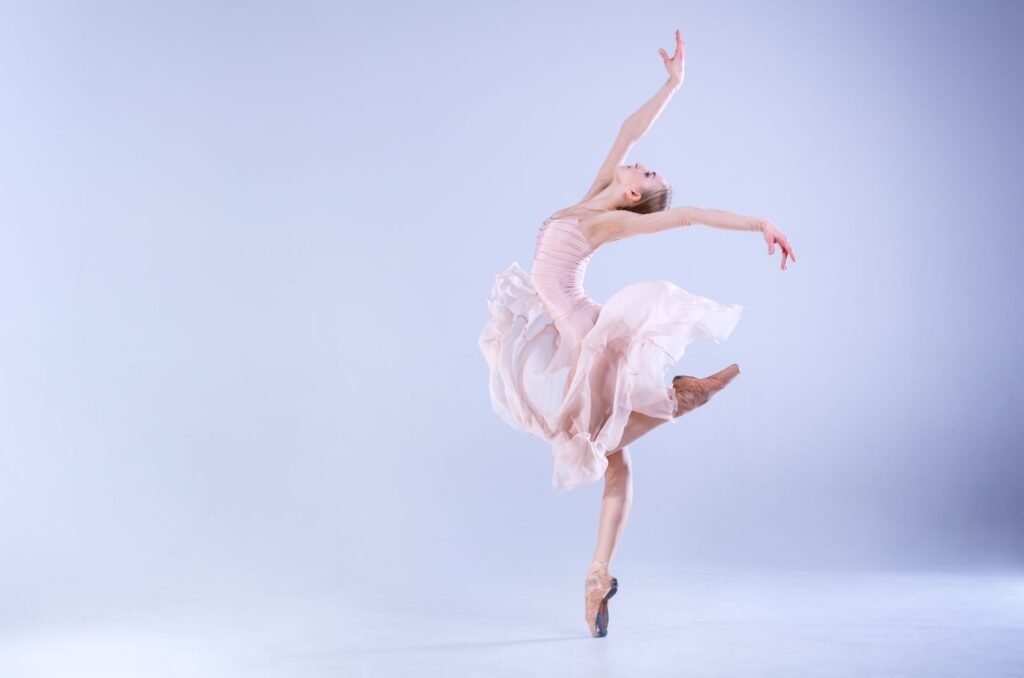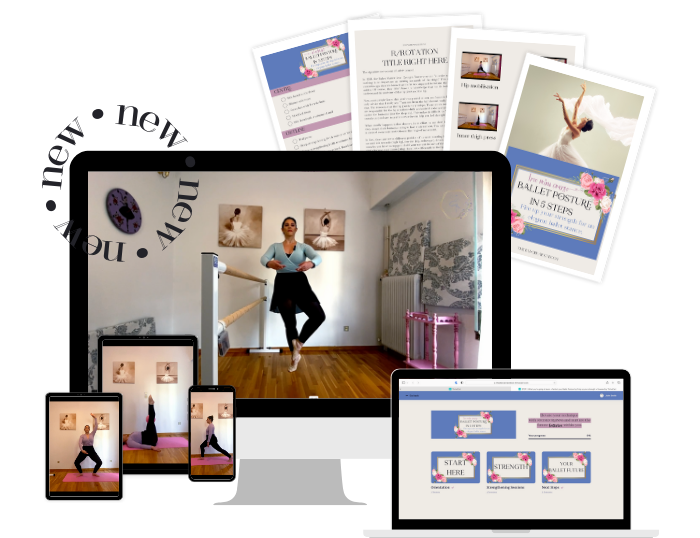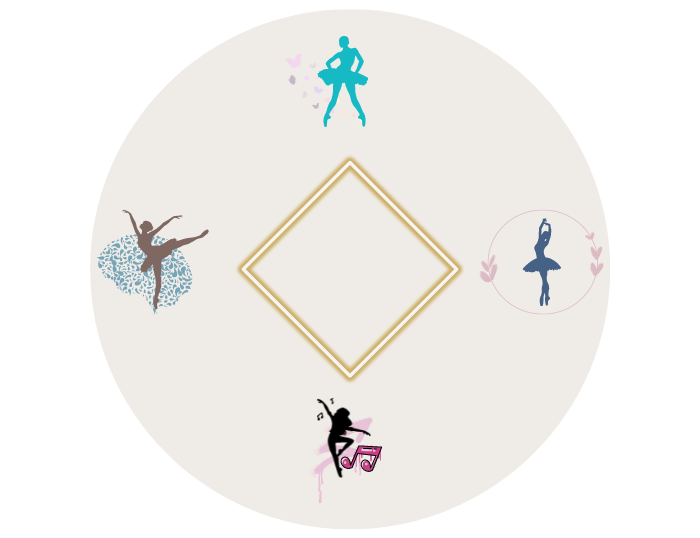Do you ever find yourself caught in a cycle of blaming your technique, ability, or age for the perceived lack of progress in your ballet journey? It’s a common struggle faced by many adult ballet dancers.
In this blog post, I’ll present to you excuses ballet students often make and how they can hinder your growth. More importantly, I will guide you to uncover the empowering truth that regardless of your limitations, you can still make progress in ballet. Most likely, you can improve more than you think possible, when you approach your practice with the right mindset and dedication.
Body limitations affect the mind more than the ballet technique
Let’s uncover the excuses that tend to create obstacles. By excuses, I truly mean limiting beliefs or stories that you’ve been telling yourself, or maybe, other people have. These stories are usually, either not true or exaggerated and given more power than they deserve.
Let’s take as an example having limited turnout. Many ballet students who are frustrated with how limited their hip rotation is, tend to tell themselves a lot of disheartening stories that hold back their progress.
Some of their discouraging thoughts are:
“No matter how much I try, my lines (arabesque, attitude…) will never look good.”
“I can’t get my extensions higher because I don’t have enough turnout.”
“My battements frappés and/or petit batterie (jumps with beats in between) looks so sloppy, but I can’t improve it because I don’t have much turnout.”
Why these thoughts are false
Now, you might be wondering why these stories are false, since it’s definitely a possibility for a dancer to not have enough turnout. Because, there’s always room for improvement.
First of all, it’s extremely rare for a dancer to be using their full turnout range. There are a lot of loosening and strengthening exercises one can do to reach closer to their true range.
Secondly, even when you get to your maximum range, you can always strengthen up more and improve your lines, extensions etc.
Also, let’s not forget that the magic that ballet inspires expands beyond the limits of turnout. Usually, each and every dancer has some limitations but also some talents. In my example, the dancer with the limited turnout could have some wonderful qualities. They might be really expressive, or have beautiful port-de-bras (arm movement), or they might have superb ballon (ability to jump high).
So, our imaginary dancer focuses on this one limitation, which means that they spend time and energy feeling frustrated. Instead they could spend that energy on leveraging their other talents and improving their strength and technique.
How to improve in ballet
So, let’s return to the original false belief that a certain element of ballet will never improve. It’s important to challenge this mindset and recognise that there’s always room for growth and progress. Even if it may require dedicating more time and effort or adjusting your expectations.
Of course, focusing on the frustration also affects your self-esteem which can negatively impact your overall performance. Axiomatically, when you believe these limitations to be true for yourself, it’s difficult to find the motivation to try. What’s the point of trying if progress is impossible?
On the contrary, focus on what you can do to improve. Eventually you’ll see the improvement, which will be evidence that your transformation is possible, no matter how slow or fast.
You can see now, in this one example, how much one worry can affect your ballet performance. Often, ballet students have combined insecurities. Some common ones are:
“I don’t have the body for ballet.”
“I can’t remember the choreography.”
“I’m not flexible/strong enough…” and so on…
If you peel back these stories, like I did in the example, you’ll see the huge impact they can have on your progress. And that’s why I call them excuses!
Because it’s not true that you can’t improve even if you try, but it’s definitely true that you won’t improve if you don’t try!
Take a moment to think about false stories you’ve been believing and how you can change them.

The Truth About Ballet
In addition to the above, it’s essential to understand the true nature of ballet. Ballet is an art form that strives for perfection, but it’s important to realise that no human being is flawless. Striving for perfection leads to perfectionism. This is something a lot of people see as a positive character trait, but in reality it’s a hindrance. It’s a hindrance because, since perfection doesn’t exist, perfectionism becomes a battle that cannot be won.
According to the American Psychological Association perfectionism is “the tendency to demand of others or of oneself an extremely high or even flawless level of performance, in excess of what is required by the situation. It is associated with depression, anxiety, eating disorders, and other mental health problems.”
However, the strife for perfection ballet carries, can and should be positive. If you look at it through the lens of a positive mindset, it can guide you towards becoming the best dancer you can be.
Ballet is a constant pursuit of excellence that can never be fully achieved. Embracing this truth can help you shift your perspective and release the pressure of attaining perfection. I highly recommend Natalie Orr’s beautiful episode on perfectionism on her YouTube channel.
Redefining The Ballerina
Let’s talk about what it means to be a “true” ballerina! I know for a fact that many dancers, especially adult dancers, struggle with the idea of calling themselves a “ballerina”, because this word comes with different connotations.
Ballet students often associate the word “ballerina” with a certain body type, age, ability etc. And the problem is that if you don’t relate to those stereotypes, you don’t feel worthy of calling yourself a “ballerina”. This means that you’re striving to achieve something in which you don’t belong.
Many people believe that “ballerina” defines a certain status. But that’s just inaccurate. You’ve probably heard the word in certain titles, like “prima ballerina” which means first dancer. However, the word in itself just means a female ballet dancer, and a dancer means someone who dances.
Ballet is traditionally a hierarchist world where professional dancers’ promotions are accompanied by certain titles, i.e. danseur/danseuse étoile, soloist etc. That’s a conversation for another day, but the way that professional dancers are evaluated and ranked shouldn’t take away your right to belong in the balletverse!
I believe that the essence of a true ballerina resides in the unwavering passion and commitment to this beautiful art. If you’re a devoted ballet student -and judging by the fact that you’re reading this, you must be- you’re a ballerina/ballet dancer.
In case you’re wondering why this is important, it’s because words are powerful. If you’re afraid to call yourself a dancer, you’re creating a thought pattern that you’re not worthy of it, that you don’t belong in this. So, why try? What’s the point?
Thankfully, the ballet world is becoming more and more inclusive, especially to adult ballet dancers, so don’t be afraid to be part of this transformation.
The Power of Effort and Growth
Instead of giving in to the excuses and the limiting beliefs, it’s time to recognise the significance of putting in the work and pushing yourself beyond your comfort zones. It is through your commitment and determination that you can truly excel in ballet.
Embracing a growth mindset and being open to perpetual improvement are key in unlocking your potential for incredible personal and artistic growth.
By working at the maximum of your capacity, even when it may seem futile, you are creating your path for remarkable progress. The more you evolve and progress, the more confident and fulfilled you will feel in your ballet practice. Your journey is unique and personal, and it is in your hands to shape it into something truly extraordinary.
Finding Freedom and Embracing Imperfections
As you let go of the excuses and embrace your imperfections, a newfound sense of freedom emerges.
In this blog post, we have explored the excuses we often make, the truth about ballet’s pursuit of perfection. We’ve also explored how we can redefine our understanding of what it means to be a ballerina.
By letting go of self-imposed limitations, embracing growth, and celebrating your individual strengths, you can experience the true beauty and fulfilment of ballet. So, let’s embrace the imperfections and realise the extraordinary potential that lies within you.
If you’re at the early stages of your ballet journey and you’d like some guidance in order to establish a solid ballet posture, enrol in the free mini course “Ballet Posture in 5 steps” by clicking here.
I’d love to know your thoughts on this topic. Share your experiences in the comments below.






